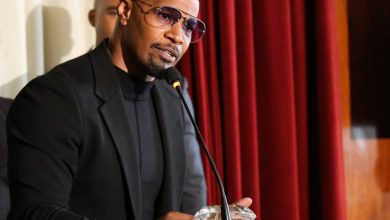Resilience Reborn: How I Transformed Trauma into Triumph


Ce Anderson’s story is a compelling narrative of resilience, transformation, and empowerment. Born to a single mother during the height of the crack epidemic in Washington, D.C., Ce’s early life was marked by instability and hardship. Her journey from these challenging beginnings to becoming a licensed and nationally certified clinical therapist and trauma recovery expert is a testament to her strength and determination.
“I spent a lot of time just trying to navigate the unpredictability of having a parent who was actively struggling with alcoholism. I spent a lot of time in school and getting my MET [Motivational Enhancement Therapy] through my academic abilities. And my ability to just see things differently,” Anderson shares. “From that, I was able to be not only resilient but to understand lived experiences, both healthy and unhealthy. Sometimes we are handed these challenges that we don’t ask for, but we can bring about positive change by making a conscious choice. Even when we don’t see it, we can still strive for better and know that more is possible. So, even when I didn’t see what it was what I knew I wanted, even when there were no real models or living, breathing individuals to guide me.”
Initially aspiring to become an orthodontist, Anderson soon discovered that this field was not her true calling. Her academic explorations led her to psychology, a field that resonated deeply with her personal experiences and transformative insights. This shift marked the beginning of her journey into mental health and trauma therapy.
Anderson’s personal experiences as a trauma survivor significantly shape her approach to therapy and consultancy. Her lived experiences provide a unique vantage point, allowing her to offer profound validation and understanding to her clients.

“Oftentimes, we may receive professional services from someone who is qualified, but most of their qualifications come from a textbook and exams. I think my childhood, my adolescence, my personal story, and the path I had to navigate to come to this place of healing and supporting other people were instrumental in viewing therapy as one,” Anderson adds. “Trauma is something that happens to most people and is something we can overcome. It shows we are not broken but instead are just little kids in these grown bodies trying to fix things that have gone wrong. Many of my patients say, ‘Oh wow, you explain this in a way I didn’t understand before.’ I give them a vantage point because not only do I have this wealth of information, but I have also lived, survived, and thrived after very difficult circumstances and obstacles. Offering both clinical and lived experiences provides a different level of validation to people’s real-life experiences.”
Anderson hopes more people in the Black community will recognize the importance of trauma’s impact.
“When we’re talking specifically about trauma within the context of the Black collective, one of the misconceptions is that trauma isn’t real, that life is automatically hard, and you should just get over it because everybody goes through things. While there are challenges in life and everybody goes through something, trauma is very real, and it impacts everybody differently,” she shares.
With this in mind, she’s optimistic more people will recognize when they need assistance and start their healing journey.
“Everyone is affected differently, and sometimes people don’t understand that they are not okay. They’ve just been encouraged and forced to operate despite the trauma and how it’s impacting them. Many people function in a state of suppression, addiction, or dysfunction, but that doesn’t last forever,” Anderson notes.
“Eventually, it all comes crashing down. Trauma isn’t just about being hurt; it’s about being unable to incorporate or integrate the experience into your emotional and mental self. Think of it as being stuck in intense emotions about an experience that interrupts your sense of safety. This includes not just physical safety but also emotional, psychological, and even financial safety. Trauma is about how an experience changes the way you view yourself and the world around you,” she adds.
For Anderson, writing has played a vital role in her healing process. Through her books, “Love T.A.P.S.: Red-Flags of an Abuser & How to Get Out” and “The Strong Woman’s Guide to Her Soft Era”, she aims to inform and inspire others by highlighting possibilities for better, healthier lives.
Empowerment, according to Anderson, involves recognizing your inherent worth and the power to make choices that lead to a better future.
“I encourage people to understand how trauma operates. Trauma is stored in our brains and bodies. Sometimes, our brains aren’t consciously reliving the traumatic moment, but our bodies are. People may have unexplained aches, a desire to sleep excessively (a trauma response indicating they are in freeze mode), or they may overreact to situations (indicating they are stuck in flight mode). They may be irritable or anxious. The first step in healing is to understand how you are currently operating and the patterns you’ve developed in response to hard things,” she advises.
“Identify where you are stuck. Is there something you can’t do? Is there something difficult to acknowledge? Have you adapted your life to avoid being triggered? Sometimes this means cutting people off without explanation or avoiding repairing relationships to protect yourself. Acknowledge the existence of the situation and explore how you’ve been impacted. Then, decide where you want to go. Do you want to heal yourself or involve others in your family? Some things are within your control, and some aren’t. Once you decide what the healed version of yourself looks like and the patterns you want to change, you can invite yourself on the healing journey. Remember, the healing journey is inner work. It’s about the motivation to want things to be different and the commitment to the healing journey, even when it gets hard. It’s okay to feel scared, but you have the choice to stay with it and come out on the other side,” Anderson adds.
If you have fear or stigma associated with seeking help for trauma, Anderson advises seeking professional support despite these challenges. Licensed professionals provide evidence-based treatments and a confidential, unbiased environment essential for effective healing.

“Fear is normal. Being nervous about examining painful things is typical and to be expected. The beauty in understanding that fear is normal is also understanding that you get to make a choice to move forward despite it. Don’t wait until the fear goes away because it likely won’t, but you can still choose to do it. Recognize that tools are available, that they are trustworthy, licensed, and evidence-based, and that you have people supporting you,” she shares. “It’s okay to feel scared. The stigma around mental health, particularly for minorities, is diminishing, and we’re starting to understand that mental health matters. It’s as important as physical health, and we need to take care of it to enjoy and be present in our lives.”
As a Black woman who understands the impacts of trauma, she hopes Black women, in particular, will see the importance of advocating for their safety and well-being.
“It’s important to understand that you deserve to be safe in every way, and your voice matters. Black women are often undervalued and seen as having a high tolerance for discomfort. We are often dehumanized because of our intelligence and ability to show up and overproduce. When we do complain or speak up in environments that aren’t supportive, we are seen as aggressive or complaining. I encourage you to do too much because if you lose that job or are in a situation where your health is threatened, no one will replace you. It’s your right to value yourself and prioritize your health over being too much for someone who may not be enough for you. If you’re in a situation where you have to choose between yourself and a job, choose yourself,” she concludes.
If you are interested in learning more about Ce Anderson’s work and her books, they are available at major retailers like Barnes & Noble and Amazon. She also provides additional resources and support through her website, Instagram, and TikTok.




